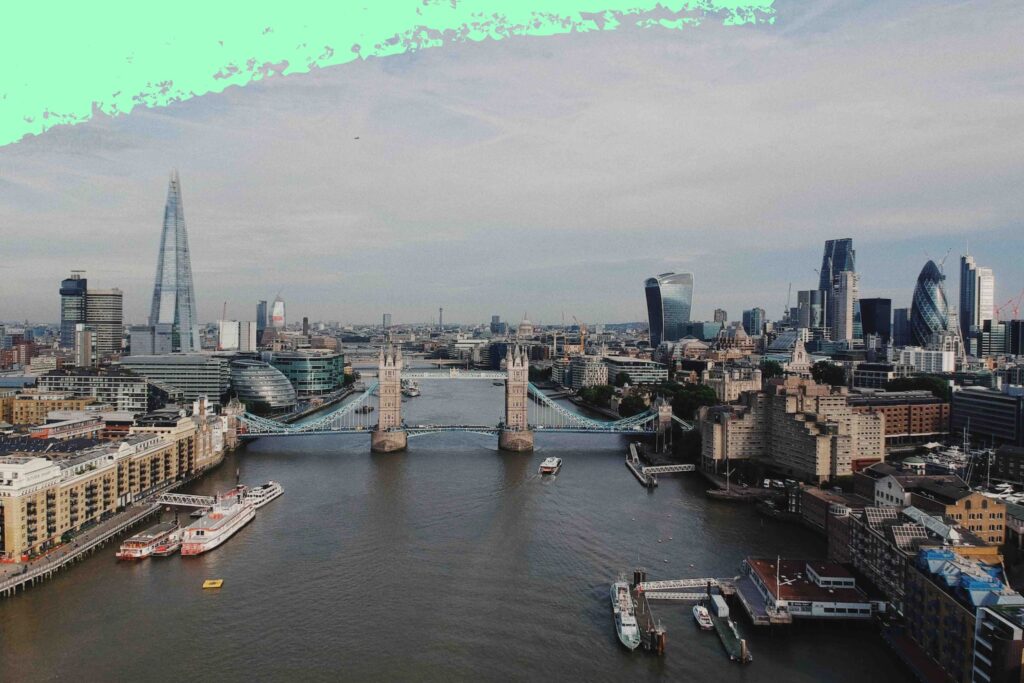Living in a heaving metropolis like London, with its constant hum of traffic, clamour of voices, and rattle of the iconic Underground, can be a vibrant experience, sure. It can also be a noisy one. While the city’s hustle and bustle might appeal to many, the sometimes seemingly incessant noise can sometimes be overwhelming and potentially damaging to your hearing, too.
The good news is that there are several measures you can take to make city centre living less noisy. These are those.
What Are Some Of London’s Noisiest Areas To Avoid?
Sometimes, London’s undeniable dynamism comes at a price – noise pollution. Various studies and interactive maps have pinpointed the city’s loudest areas, highlighting that noise pollution is a significant problem in London.
The North Circular, a key road in London, has been dubbed as the country’s loudest road, based on a survey conducted by the UK Noise Association. This conclusion was drawn from numerous entries submitted by individuals nationwide.

An interactive map unveiled by climate charity Possible has further illuminated the loudest residential areas in London. Regions near the M25 motorway exhibited the most severe levels of noise pollution. Areas with heavy traffic such as Soho, Covent Garden, and Westminster also registered high noise levels of approximately 70dB, equivalent to the noise produced by a washing machine, according to Time Out London.
Studies have determined that Tower Hamlets is the noisiest borough in London, followed by Kingston upon Thames and Camden, as reported by House Beautiful. Other noise pollution hotspots seem to be located on the northern, eastern, and western outskirts of the capital, particularly near Heathrow Airport and around the M25.
Noise pollution in London is more than just a nuisance; it’s a health risk. The World Health Organisation (WHO) has stated that noise pollution is the second biggest environmental health threat in Europe after air pollution. It has been associated with heightened anxiety levels and poor cardiac health.
Activists are demanding immediate measures to address London’s noise pollution issue. They believe that the city should cut down on traffic and overhaul its soundscape, taking cues from other large cities like Paris. London’s Mayor, Sadiq Khan, has been called upon to devise a strategy on noise pollution and take steps to mitigate the problem.
Where Are Some Of London’s Quietest Areas To Spend Time In?
Studies indicate that the most peaceful boroughs in London include Tower Hamlets, Sutton, and Waltham Forest. This finding is based on sound data (it should be noted, however, that some have cast doubt over the data) collected from 4,000 decibel readings across the city. With an average of 53.3 decibels (dB) from 44 recordings, Tower Hamlets emerged as the most tranquil borough. Sutton followed closely with an average of 53.8 dB from 33 readings, while Waltham Forest secured the third position with an average noise level of 56.1 dB from 34 readings.
Southwark, another unexpectedly quiet spot in London considering its high population density, owes its peacefulness to its open spaces and parks; the borough boasts over 130 of them. Barnsbury Square, a street in Tony Blair’s former neighbourhood, has been recognised as the quietest street in London.
When deciding where to live – or even simply spend some time in – in London, it’s worth considering the quieter parts of the city. Here are a few recommendations:
- Richmond: This borough has an abundance of green spaces, like Richmond Park and the Royal Botanic Gardens. It’s also less densely populated than central London, making it quieter overall.
- Hampstead: If a calm atmosphere and village feel are what you seek, Hampstead is ideal. It offers an array of quiet streets and houses, interspersed with the greenery of Hampstead Heath.
- Dulwich: Another quiet area, Dulwich boasts a village-like atmosphere, ample green space, and a lower population density than central London.

Soundproofing Techniques
If you’re living in London and find your property is sometimes prone to noise disturbances, then there are some changes you can make at home to ensure sound leakage is at a minimum.
Install Acoustic Panels
Acoustic panels, made from sound-absorbing materials such as foam or fabric, absorb sound waves, reducing the level of noise that reverberates around your room. They can be installed on walls, ceilings, or even as standalone partitions. They come in various styles and colours to match your decor, thus serving a dual functional and aesthetic purpose. Soundproofing also exists in the form of wooden acoustic panels, which can certainly look more stylish than those made of fabric.
Use Double Glazing
Double-glazed windows consist of two layers of glass with a layer of inert gas in between, which significantly reduces the amount of outside noise that enters your home. They also provide the added benefits of enhancing your property’s energy efficiency and security.
Invest in Soundproof Curtains
Soundproof curtains work by absorbing and blocking sound waves. These are typically made from dense, heavy materials and often contain layers of sound-absorbing materials. They are an economical way to reduce noise levels, especially if you’re renting and can’t make more permanent changes.

Protection From The Noise Of The Underground
The noise levels in the London Underground can sometimes exceed 100 decibels, a level potentially hazardous to long-term hearing. Here are a few tips to protect your ears:
Use Noise-Cancelling Headphones
These headphones considerably reduce background noise, allowing you to listen to music or podcasts at a lower volume.
Limit Exposure
If possible, try to limit your time in the noisiest parts of the Underground system. If your commute demands regular underground travel, consider investing in earplugs designed for noise reduction.
Stand Back
When waiting for a train, stand back from the edge of the platform. The noise is generally loudest as the train approaches and leaves the station.
Other Ways To Ensure London Living Is A Peaceful Experience
Embrace Quiet Activities: Visit quiet places like libraries, museums, and parks to give your ears a break from the city’s noise. Walking or cycling instead of using motorised transport can also reduce your noise exposure.
Use White Noise Machines: These machines can help mask the ambient noise in your environment, aiding in relaxation and sleep.
Practice Mindfulness: Techniques such as mindfulness and meditation can help you focus on the present moment and reduce the impact of noise on your mental wellbeing.
The Bottom Line
London’s vibrant rhythm need not be a hurdle to a peaceful existence in the city. By adopting soundproofing solutions, choosing to spend time in quieter neighbourhoods, and protecting your ears from the noise of the Underground, you can create an oasis of calm in the midst of the city’s liveliness. Remember, it’s not just about reducing the noise around you, but also about creating a tranquil space within.
In the heart of the non-stop city, harmonising with the sounds rather than fighting against them can lead to a healthier, quieter, and more enjoyable London living experience.




